A group tour today down in the Brecks. With the so-called ‘Mini-Beast from the East’ due to arrive with us overnight, we were forecast plunging temperatures, blustery easterly winds and snow flurries. Not exactly ideal conditions – but as we know, forecasts are notoriously unreliable these days.
When we looked more closely, the detailed forecasts were not necessarily that bad, the worst of the snow was predicted to fall on Saturday night, there was just 10-20% risk of precipitation during daylight hours today (Apparently! It turned out to be a bit more than that.) and there was even the chance of some sunny intervals. With the group keen to give it a go, we pressed ahead (despite two of the group dropping out at the last minute, early in the morning). We were all very glad we did!
A quick check on the way confirmed a Stone Curlew was in one of its regular locations, tucked down in a field, so after meeting up down in the Brecks, we headed straight out to see it. Unfortunately, by the time we got back there just a short time later, there was no sign of it. It had started to snow now and, although it wasn’t settling, it was whipping across the field on the blustery wind. We decided to have another look later, once the weather calmed down again.
We headed off into the forest to look for Woodlarks instead. They should be singing at this time of year, but in the cold and snow they were quiet early this morning. We walked round the edge of a couple of clearings where they are regularly to be found, but it was very quiet. So we decided to try to find a more sheltered spot. As we walked down a ride between two plantations, several Song Thrushes were feeding on the path. Two Great Tits and a pair of Coal Tits had dropped down to feed in the grass on the edge of the trees.
As we came out of the plantations, there were open fields on one side of the path. Scanning over the trees beyond, we saw a big flock of Woodpigeons erupt in the distance and a few seconds later picked up two raptors tussling even further off behind. They looked like Goshawks – one of our main targets for the day – but unfortunately as we tried to get everyone onto them, we lost them in the swirling snow. They had probably dropped straight back down out of view. It didn’t feel like our lucky day.
Fortunately, our luck was about to change. We made our way round to another clearing which was more sheltered behind the trees. As we walked up, we could see a big flock of Fieldfares and Redwings out on the far side, flying up periodically and dropping down into the grass. A flock of Long-tailed Tits was calling in the pines beside us and we could hear a Goldcrest singing too.
Walking quietly along the most sheltered edge, we heard a Woodlark call. It was very quiet, and it seemed like it might be way out in the clearing, but they are great ventriloquists and often sound much further away than they really are. We stopped and scanned, then as we turned a Woodlark came out of a furrow not ten metres away from us! We had a great view of it, as it picked its way through the grass – we could see its bold pale supercilium and, from behind, they way they met in a shallow ‘v’ at the back.
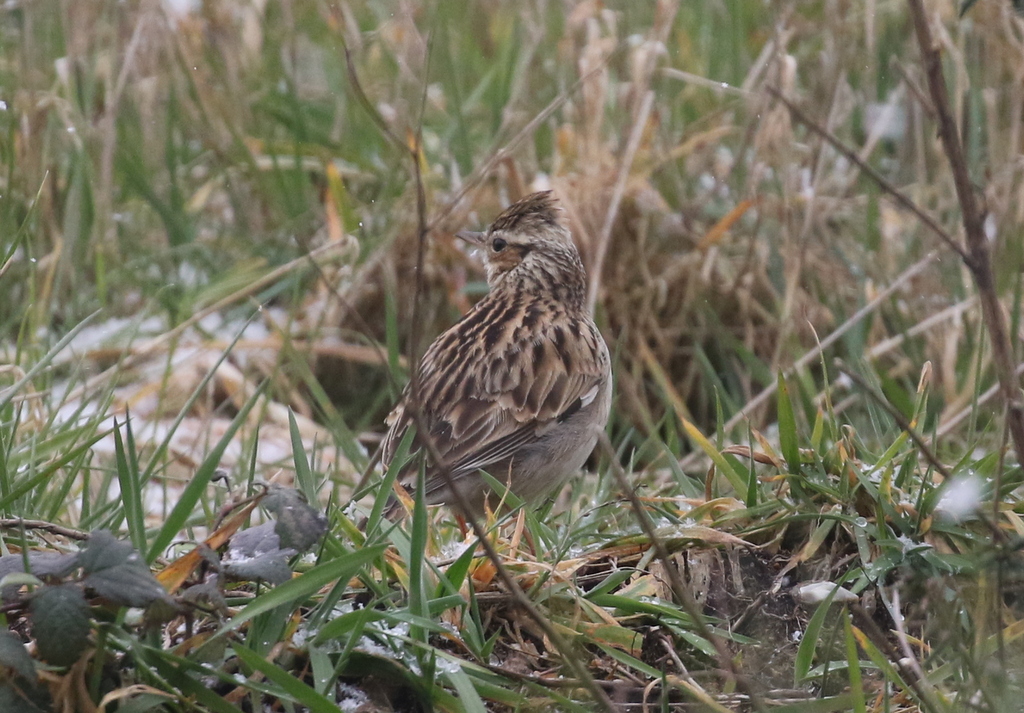
We stood quietly and watched for a while. Suddenly a second Woodlark appeared, next to the first. A pair were feeding here together, the male occasionally uttering a brief song phrase, while he accompanied the female. They could be nesting soon, as soon as the weather improves, so the females in particular need to feed up now. The two Woodlarks gradually worked their way away from us, back the way we had just come.
The snow had eased off now, so we headed over to another part of the forest to have a go to see if we could find any Willow Tits. Walking down along the ride, it was very quiet at first, until we came to an area with two feeding tables set up. There were lots of tits constantly coming and going, and in amongst the commoner Blue, Great and Coal Tits, we picked out one or two Marsh Tits. They would dart in, grab a seed, and dart back to the bushes nearby. But there were no birds singing today and few even calling, which would make our chances of locating the Willow Tits much more difficult.
We hadn’t been there long when the sky started to brighten. First we could see the sun through the clouds, then we saw a patch of blue above us. It even started to feel a little milder! We could wait and see if the Willow Tits started to sing now, but this was probably our best chance to see a Goshawk today. The latter was our real priority today, so we hurried back to the car and headed round to a nearby site to try our luck.
On our way, we spotted a Red Kite circling over a field beside the road, a good sign. It was already clouding over again when we arrived, but as we got out of the car, a Common Buzzard was hanging in the wind over the trees. We only had to wait a few minutes before we picked out two Goshawks in the distance.
The two Goshawks were chasing each other, gradually getting closer towards us. It appeared to be an adult after a juvenile, presumably trying to chase it out of its territory. We got them in the scope so everyone could get a good look at them. One dropped down into the trees, sending the Woodpigeons scattering. The other turned and headed towards the road, keeping low and eventually dropping below the tree line too.
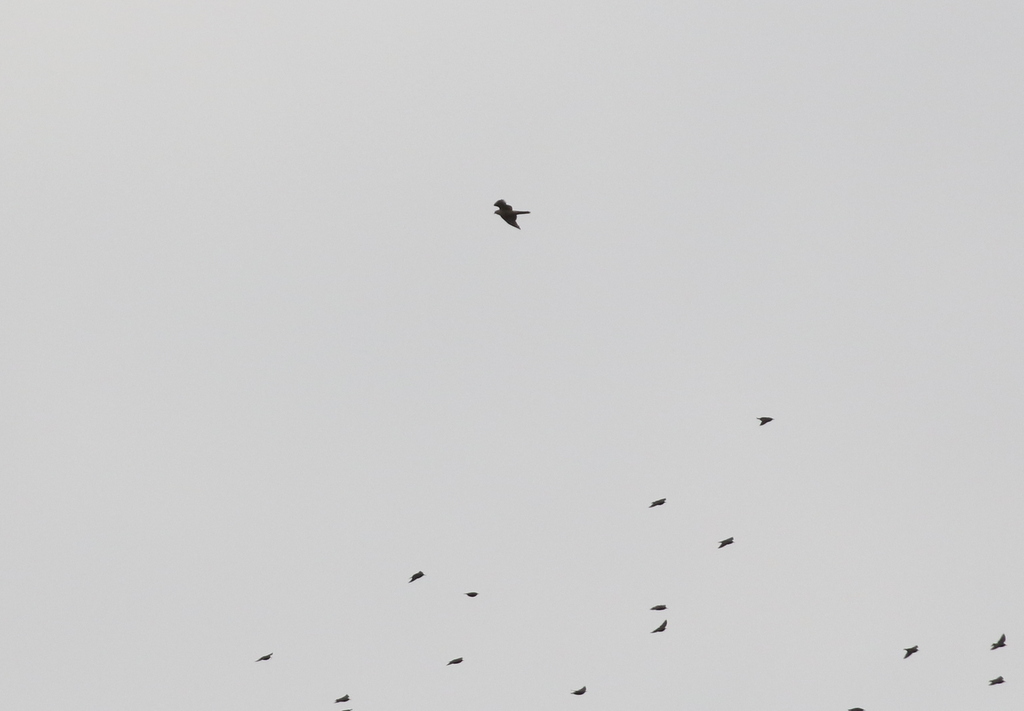
It was a bit brighter still on the other side of the road, and first one Goshawk crossed away in the distance, then another came over much closer, scattering the Lapwings and Starlings from the fields behind. Remarkably, one of the Goshawks, the juvenile, then started to display over the trees, starting with a bout of slow-flapping with deep, exaggerated wingbeats, then doing a quick rollercoaster dive before turning back up vertically.
Even better, a third Goshawk then appeared over the field too, another juvenile, this one with rather tatty wings. We watched it as it headed over to the trees at the back too, and once again managed to get good views of it in the scope here. A couple of minutes later, we picked one of them up again, circling up high in the distance.
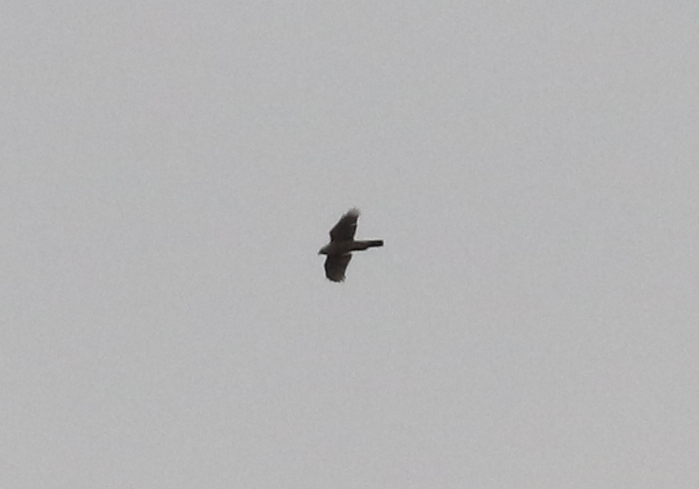
To have such good views of Goshawks on a day like today was a real bonus. But they do like the wind, more so than a bright but still day, which undoubtedly helped, as well as the briefly brighter skies. We were glad we had hurried over. We were then given a tip off that two Stone Curlews had been seen flying across to one of the other fields, back where we had started out this morning, where they had taken shelter along the edge. Having had such good views of the Goshawks and with the snow still holding off, we decided to head straight round there next.
When we arrived, we had a quick scan around the field edge from the other side of the road, but couldn’t immediately see anything. As we walked up to the hedge, suddenly a Stone Curlew flew up from the long grass on the far side of the field and helpfully landed right out in the middle. We got it in the scope and had a good look at it – the staring eye with bright yellow iris really stood out.
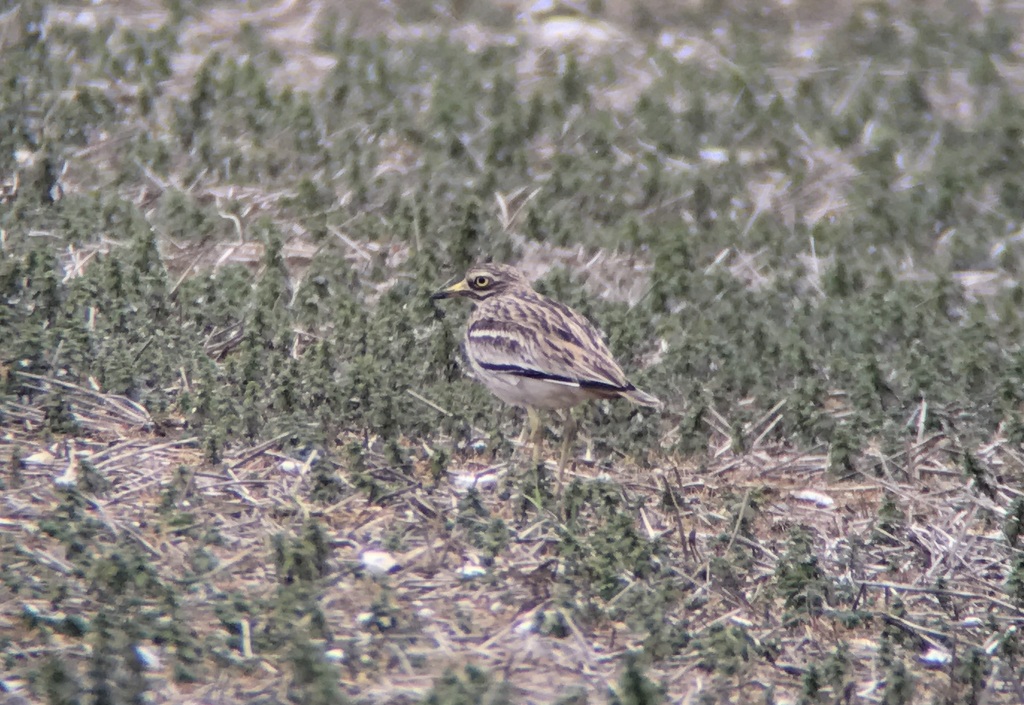
The Stone Curlew stood in the field for a couple of minutes, then ran across towards the other side in stages, stopping still for a while each time, before eventually disappearing from our view behind the trees. It was great to catch up with it here this time.
With three of our main targets for the day already seen and seen well, we decided to have a go at catching up with Lesser Spotted Woodpecker next. Unfortunately, when we got to Santon Downham we found that the footpath alongside the river had been closed.
This footpath is always muddy and slippery in winter, particularly if you try to walk along the sloping parts of the bank which appear superficially drier. A few days ago, a birdwatcher down looking for the woodpeckers had unfortunately slipped and seemingly broken her ankle. It is not an easy place for the emergency services to access anyway and there seemed to be a misunderstanding initially that the casualty was stuck in the mud, which she was not. There was quite a response as a result – two fire engines, fire support vehicles and two fire officers’ cars, one ambulance, one paramedics car, and a police car!
Hopefully the birdwatcher concerned was eventually rescued without too much distress and we wish her a speedy recovery. However, in the light of this incident it appears the Forestry Commission have closed off the whole footpath for an indefinite period, which means there is no access to look for the Lesser Spotted Woodpeckers in their favoured spot.
We contented ourselves with a quick walk round the area instead. There were lots of Chaffinches and Goldfinches in the trees, plus a couple of Marsh Tits, one of which was singing beside the road. A large flock of Redwings, about 50-60 strong, flew up from the paddocks and into the poplars by the river, along with a group of Starlings. A Great Spotted Woodpecker landed high in the poplars too.
A quick look at the feeders in the garden by the bridge revealed several Bramblings. A brighter male showed particularly well, on the ground and perched in a nearby tree, as well as several slightly duller females.
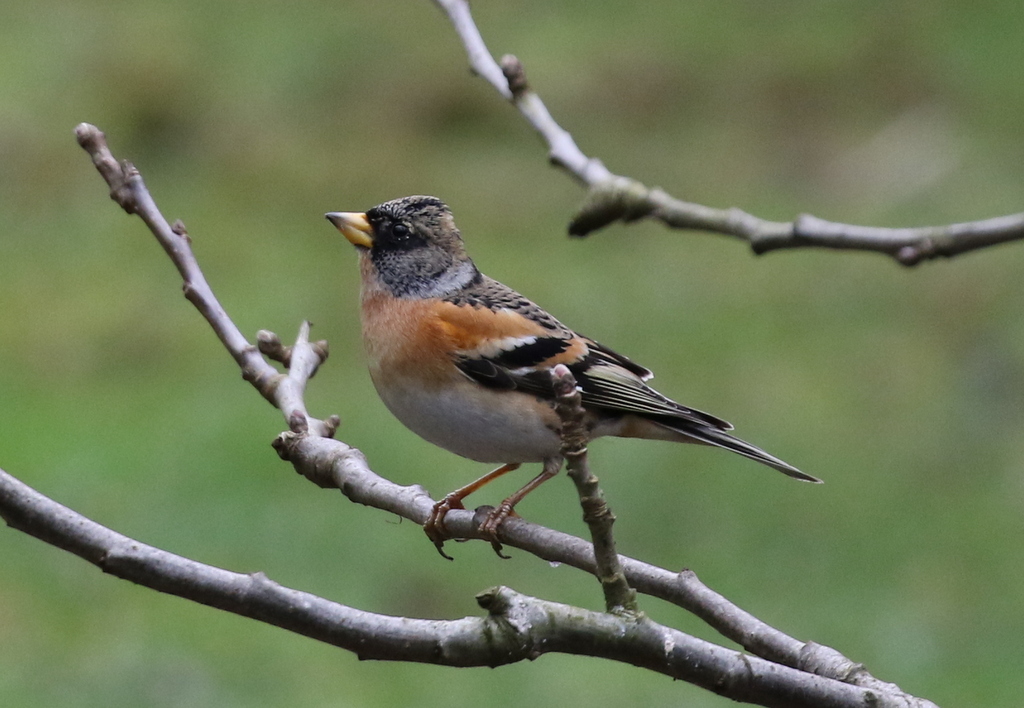
We had intended to eat our lunch down along the river bank, but instead we drove down to St Helens picnic area. It was quiet and fairly birdless here today, so after eating and having a quick look down at the river, we decided to make our way round to Lynford Arboretum.
As we walked in along the track past the Arboretum, we stopped for a quick look at the feeders from the gate. There was very little food left, just a few fatballs in the cage feeder which had attracted a handful of tits. Nothing was feeding on the ground here this afternoon.
Continuing on down the hill towards the bridge, a Redwing was feeding under the trees with a couple of Blackbirds. The latter flew off, but the Redwing appeared pretty fearless. Perhaps it was hungry, and we had great close views of it as it probed around the base of the trunks, hiding in the buttresses, or hopped out across the grass between the trees.
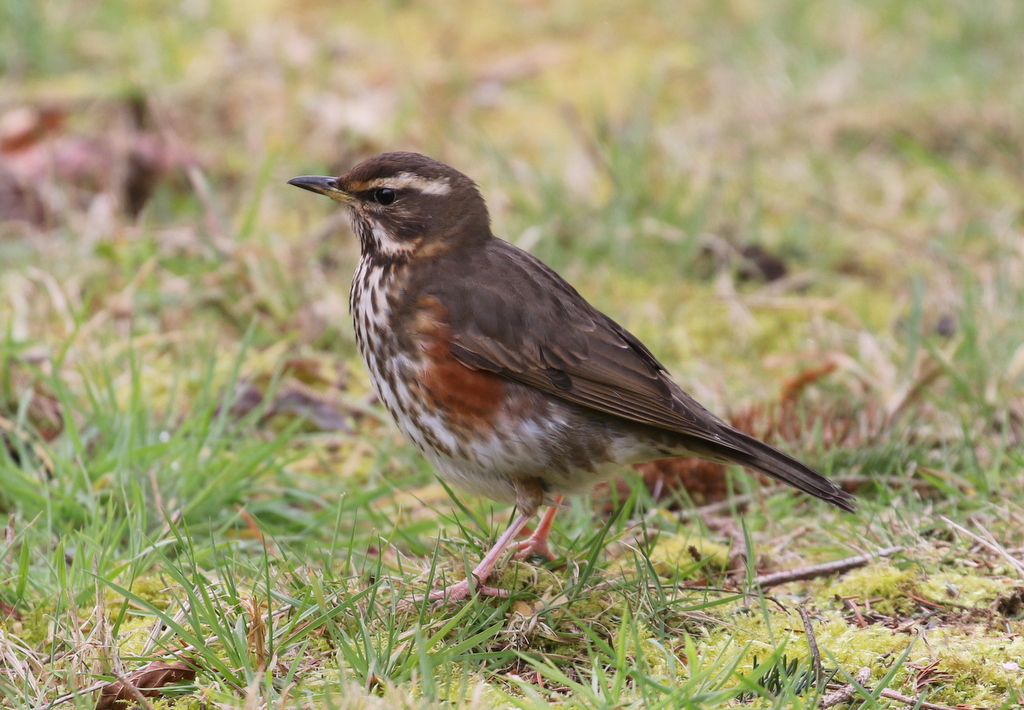
There was no food put out for the birds down at the bridge either this afternoon, but thankfully we had brought a bag of sunflower seeds with us. Within seconds of spreading some out, first the Blue Tits arrived, quickly followed by Great Tits and Marsh Tits. This is a great place to get close up views of the latter in particular.
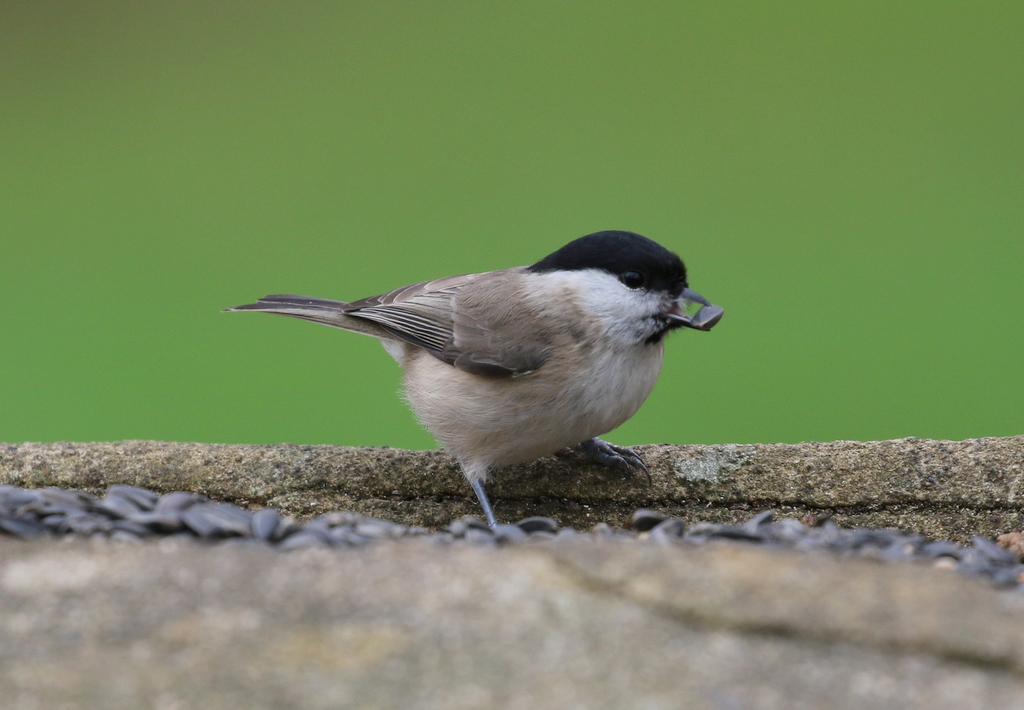
Eventually the Nuthatches got involved too, with several different individuals coming in to the seed from time to time. They are a bit shyer than some of the other birds, and spent quite a bit of time perched in the trees nearby before making a very swift visit.

There were other birds here too. Robins, Dunnocks and Chaffinches came in to investigate the seed too. Several Long-tailed Tits were hanging on one of the feeders which still had a couple of fatballs left. We heard a Treecreeper calling but it didn’t show itself today. There were lots of Siskins in the alders and we watched a male singing and displaying to a female above our heads.
After a while, a large group of people out for an afternoon stroll came down along the path beside the lake and stopped on the bridge. We took this as our cue to go and look for Hawfinches in the paddocks. As we walked down along the path beside the fields, towards one of the larger gaps in the hedge, we could see lots of Redwings in the hornbeams in the middle, along with a Mistle Thrush.
It was not forecast to snow again until later tonight, but at that point a thick flurry started once more, which for a minute or two made it difficult to see into the trees. It eased off a bit and we did manage to have a good look, but there was no immediate sign of any Hawfinches there and very few other finches feeding below the trees today. When all the Redwings and Chaffinches which had been there spooked and flew off towards the Arboretum, we decided to go for a walk round.
There were several pairs of Gadwall on the lake and two Canada Geese on the lawn in front of the Hall, along with several Moorhens. We could hear a Little Grebe laughing at us, but didn’t see it here. A Great Spotted Woodpecker was in the trees beside the path, before flying off behind us as we passed. A little further on, we flushed a drake Mandarin from the water under the trees beside the path, which flew off into the wood beyond, and we eventually found two Little Grebes tucked in under the overhanging vegetation, fast asleep.
Circling round through the trees, it was fairly quiet, apart from the far side where a Marsh Tit called as it came in for some seed. As we made our way round to the far side of the paddocks, we stopped to look in the top of the firs beyond, to see if any Hawfinches were coming in. It was snowing quite heavily now, although at least it was still not settling on the ground, and the wind seemed to have picked up again, which meant it was hard to see them perching in the tops of the trees for long.
It felt like we might have run out of luck at the last hurdle, but as we walked back beside the paddocks we could see all the Redwings were now busy feeding under the hornbeams. We have seen the Hawfinches feeding in with the Redwings before, so we stopped for another careful scan and there was a cracking male Hawfinch down on the ground. We all managed to get a good look at it through the scope, before something spooked all the birds and they flew up into the trees.
Making our way back up to the car park, we had nice views of a Goldcrest in the low fir trees here. We continued on to the old gravel pits beyond, where there were not as many ducks as there have been in recent weeks. There were plenty of Tufted Ducks and a few Cormorants. A flock of Gadwall dropped in, accompanied by a few Teal. On the larger pit, it was pretty exposed – the pair of Great Crested Grebe were still present, but swimming around at the back.
With occasional flurries of snow still falling, it was time to call it a day and head back to the warmth of home! Once again, we had seen the benefit of getting out despite the weather and giving it a go, seeing all the main species we might have hoped to see today.
















